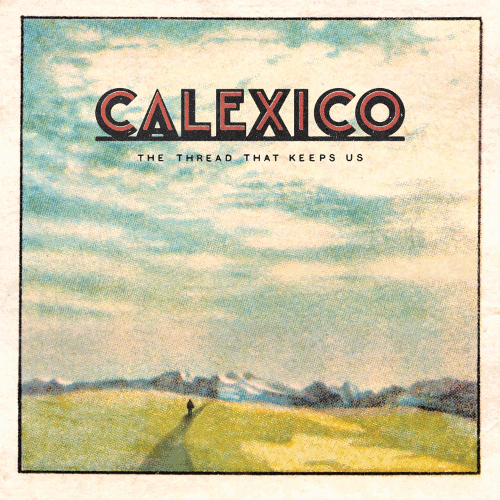(Before we go any further, a word about the title: you saw the caron on the s, didn’t you? Yes, of course you did. And that immediately suggested to you that Šlag Tanz is pronounced Schlag Tanz and you didn’t have a silly schoolboy [or girl] moment, did you? Good, and furthermore you get the Germanic sense of the word that indicates something like Shock Dance, so we don’t need to waste any further time on this now, do we? Good.)
 There are two things immediately noticeable about Magma’s Šlag Tanz. Actually maybe there are three: the first being its relative brevity, what the label describes as a mini-album, but perhaps that is not to the point: Šlag Tanz is a single piece of music. If you are unfortunate enough to have an mp3 player that puts gaps between tracks you will be annoyed by the breaks between what should be a continuous composition, but it emphasises that it is a single piece with sections rather than a song cycle.
There are two things immediately noticeable about Magma’s Šlag Tanz. Actually maybe there are three: the first being its relative brevity, what the label describes as a mini-album, but perhaps that is not to the point: Šlag Tanz is a single piece of music. If you are unfortunate enough to have an mp3 player that puts gaps between tracks you will be annoyed by the breaks between what should be a continuous composition, but it emphasises that it is a single piece with sections rather than a song cycle.
Christian Vander and the current iteration of Magma have been working on the ongoing composition of Šlag Tanz for the last few years. An earlier form of it appears of the last Mythes et Legendes DVD and recent bootlegs from Magma performances have revealed a shadowy construction process taking place in the Kobaïan shipyards. Šlag Tanz is twenty-two odd minutes because that’s how long the piece is. Forget about albums and mini-albums and singles; this is how long the composition has become at the stage where it has been recorded.
Another thing that we notice about Šlag Tanz is that most of the words appear to be in French rather than Kobaïan. This seems to be a recent development in the composition. The DVD recording features a pre-literate ululating score, which could be Kobaïan or it could be pure phonetic mulch, but at least some of that has now clarified into French. It is not unheard of for Magma to use French, but once we recognise this key feature our first revelation comes to light. Within the first section of the piece, “Imehntosz Alerte”, we hear the phrase “le cloche des mondes”, “the bell of the worlds”. Once we have understood this, the title Shock Dance becomes clear; the bell of the world is ringing. Wake up! Time to die!The short ostinato figure that opens the piece, first with the vibes and guitar and then carried by Hervé Aknin’s vocal line, punctuates the piece and returns over and over as an alarm call. It is simple but unusual in that it consists of two bars of 5/4 time. Not unusual for Magma, but an unusual measure to drive a western composition, which for all of its Gallic extraterrestrialism this piece remains. Carrying the box of this pentagonal rhythm forward is initially a struggle. Its very awkwardness adds to the alarm which is carried in the bell-tone harmonics from Rhodes to guitar to vibes to bass. At first Vander and Philippe Bussonnet regularly slam out the initial beat on bass and crash cymbal, but as the groove builds Vander moves around the pentagon, inhabiting it and giving the illusion of triple time or even a straight propulsive four.
As the motif becomes more propulsive it is less of an alarm than the hunting cry of a rider, driving the Hounds of Tindalos that pull his celestial sleigh across the galaxies. In the DVD performance we see Aknin holding his maracas like reins as the music hurtles onwards into the eschatological horizon. While all of this might suggest that Šlag Tanz is all masculine drive, Vander is too much of a composer to allow such a reductive performance from his players. By the third section, “Dümb”, a spiralling pattern, cascading between Stella Vander’s vocal line and James Mac Gaw’s guitar, carries a delicate, lyrical motif to offset Aknin’s dog sled of doom. It’s about fifty percent Tamla melisma to fifty percent Carl Orff at his most sultry. These two principles: life and death, home and the horizon, fight for supremacy or perhaps dance in the shapes afforded to them; preconscious and unwitting.And in the last moment of the penultimate section, the “Šlag Tanz” itself, everything stops, as if there had never been anything in the world but the last held chord on the piano. The veil of Maya is torn. The final section “Wohldünt” is funereal, just the male voice and a grand piano with sustain pedal held firmly to the floor: a dark eidolon within the gaudy temple structure; like the simple block of plain black that counterpoints the frenetic detail in a Druillet page spread.
None of this is surprising from a Magma piece. It is new but timeless, but then again it is played by the current incarnation of Vander’s band, and make no mistake it is now firmly Vander’s band. With Magma the composition is always bigger than any player. Philippe Bussonnet is a fantastically flexible bassist, subtle too, but we never hear any of the pyrotechnics of Jannick Top or Bernard Paganotti, and perhaps Vander likes it that way or perhaps Bussonnet is quite a different sort of player.Whatever the case, Magma is very much alive and developing new material in the twenty-first century. The myths and legends of the Mëkanïk Dëstruktïẁ Kömmandöh are still there to be revived and reinterpreted for new audiences, while Vander and his band discover new utopias deep inside their howling apocalyptacism.
-Iotar-



